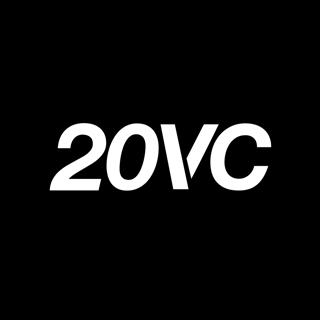
20VC: How To Do a 10x Seed Fund in 2025 | Three Frameworks to Evaluate Startups an Founders | Lessons from Losing Billions Missing Airbnb and Pinterest & Investing Lessons from Charlie Munger with Mike Maples @ Floodgate
Mike Maples is one of the OG seed investors of the last two decades. As a co-founding Partner at Floodgate, Mike has been on the Forbes Midas List eight times in the last decade. Some of Mike's investments include Twitter, Twitch.tv, Clover Health, Okta, Outreach, Chegg, Demandforce, and Applied Intuition. In Today's Episode with Mike Maples We Discuss: 04:02 Does Seed Even Make Sense as an Asset Class? 05:16 Fund Size and Strategy: How to Do a 10x Fund? 08:12 Follow-On Investments: Are they BS? 16:41 Finding Inefficiencies in the Market 26:31 Exit Strategies and Liquidity Events: When to Sell? 35:14 How Floodgate Lost Billions Missing Airbnb and Pinterest 35:43 3 Frameworks for Evaluating Startups 36:23 Case Studies: Zoom and Okta 43:34 How to Truly Analyse Product-Market Fit 45:22 Challenges with Overfunding Startups 50:02 2024 in Review: Company and Fund of the Year 54:25 Predictions for 2025
6 Tammi 1h 10min

20Sales: Rippling's CRO on Why Founders Should Not Create Sales Playbooks | Why Discounting is BS and How to Create Urgency in Deals | The Biggest Lessons on Pricing and How to Win the Pricing Game with Matt Plank
Matt Plank is Rippling's Chief Revenue Officer where he oversees all Sales and Account Management functions in the US and Internationally. Matt joined Rippling in the very early days when Parker Conrad (founder) was building V1 in a basement with $0 in revenue. Today the company is a market leader with 100s of $Ms in ARR. Prior to Rippling, Matt was a Sales Director @ Zenefits where he helped the company scale to $70M in ARR. In Today's Show with Matt Plank We Discuss: 08:25 Challenges and Strategies in Outbound Sales 10:29 Building Effective Sales and Marketing Partnerships 13:37 Founders and Sales Playbooks: Who Should Create Them? 20:45 Pricing Strategies and Customer Success 24:43 Discounting and Urgency in Sales 33:57 Building Relationships for Successful Deals 34:22 Effective Deal Reviews: Asking the Right Questions 35:30 Pipeline Reviews: Frequency and Participants 35:59 Handling Deal Slippage: Acceptable vs. Non-Acceptable Reasons 39:17 Maintaining Morale in Volatile Times 42:14 Outbound Sales Strategy: Lessons Learned 46:03 Scaling Sales Teams: Hiring and Promoting 47:15 Challenges and Strategies in International Markets 01:00:45 Signs of Scaling Issues in Sales Leadership
20 Joulu 20241h 10min

20VC: UiPath's Daniel Dines on Why Agents Do Not Mean RPA is F***** | Why We Have Reached the Upper End of Scaling Laws | The Future of Work in an Agent World and What Everyone Misunderstands About Enterprise AI
Daniel Dines is the Founder & CEO @ UiPath, one of the most incredible journeys in startups. For 10 years, UiPath was a bootstrapped company that scaled to just $500K in revenue. Then it all changed, product market fit became obvious and the rest is history. The company went on to raise funding from Sequoia, Accel, Kleiner Perkins and more. Today, the company is worth over $10BN, listed on the NASDAQ and does $1BN+ in revenue. In Today's Episode with Daniel Dines We Discuss: 1. The Future of LLMs: Why does Daniel believe that we are at the upper end of scaling laws and more compute will not lead to increased performance? Does Daniel believe we will see a world of many specialised models or fewer generalist models? OpenAI, Anthropic, Xai. Which would Daniel most want to invest in? Why them? 2. Is RPA F******* in a World of Agents: What is the core difference between RPA and agents? How do the tasks they complete differ? Why must we have a neutral meta layer coordinating RPA processes and agents? Why will siloed applications like Salesforce be unable to expand beyond their initial function? Why does Daniel believe that agents will not complete tasks but make recommendations? 3. The Future of Work: WTF Happens with Agents: How long will it be before agents are fully utilised in the enterprise? What is the role of the human in a world of agents? What are the single biggest concerns of enterprises considering implementing agents in their companies? Why has GenAI not been successful in enterprise so far? Will this change? 4. Daniel Dines: The Billionaire Behind the Brand: How does Daniel deal with the loneliness of being CEO? What problem did Daniel struggle with for much of his twenties and thirties? How did he overcome it? Why does Daniel fear that he is becoming more and more disconnected? Why does Daniel believe 1-1s are BS? What is Daniel's single biggest advice to a new parent today?
18 Joulu 202458min

20VC: Reid Hoffman on The Trump Administration | Elon Musk and DOGE | The US Defence Budget, NATO and The War in Ukraine | China, Tariffs and TikTok | The Future of Chips, Nuclear Energy, Quantum Computing and Climate
Reid Hoffman is one of the most impactful people in technology and startups. As a Founder he founded Paypal and Linkedin before moving to the investing side where he has led deals in Facebook, Airbnb and more. In Today's Episode with Reid Hoffman We Discuss: 1. China and Tariffs: Should the US ban Tiktok and other Chinese companies, given China banning US companies presence in their country? How does Reid evaluate the rise of the Chinese car industry? What are his concerns? How does Reid hope Trump uses tariffs to advantage the US position? What is Reid concerned about what Trump could do with tariffs? What would be bad? 2. Elon Musk and DOGE: What impact will Elon Musk have on the future of AI in America? Why does Reid believe that it is impossible for DOGE to achieve it's targets? What should Elon must be given credit for? What does he not deserve credit for? What are Elon's greatest strengths? What are his greatest weaknesses? 3. The US Defence Budget and Ukraine: Why does Reid believe that the US should reduce their defence budget? Does Reid believe the US should continue to finance the war in Ukraine? Should the US continue to subsidise NATO's lack of defence spending? 4. NVIDIA and The Future of Chips: Will NVIDIA be able to sustain their monopoly? What is the biggest threat to their position? Should both the US and Europe have their own chip sovereignty? How does Reid evaluate potential conflict between China and Taiwan impacting chip supply? 5. Nuclear, Quantum and Climate: Why does Reid believe nuclear fusion can solve climate change? Does Reid believe that with the rise of global conflict and AI, the importance of climate change is reduced in the attention of the world? Why does Reid believe that AI does more to help than harm climate change? Why is Reid so excited for a future with quantum computing? What are the biggest dangers of quantum that we need to be mindful of?
16 Joulu 202458min

20Growth: How to Scale to $30M ARR Bootstrapped through Content and Brand | The Ultimate Equation to Success in Sales and Why Most Founders Suck at Sales | Why You Should Overpay People and What That Means with Guillaume Moubeche @ Lempire
Guillaume Moubeche is the Founder of Lempire, a company he has bootstrapped in the most competitive market in technology and scaled to a staggering $30M in ARR. Guillaume has never raised primary funding for the business but sold $10M of secondary at a $150M valuation. Guillaume is also an angel investor and and best selling author. In Today's Episode with Guillaume Moubeche: 1. How to Build a Sales Machine: What is the biggest mistake founders make when crafting their ideal customer profile? What are Guillaume's biggest lessons in scaling from $0-$1M in ARR? Why are most founders afraid to sell? What can they do to overcome this? What is the ultimate equation to success in sales? 2. How to Build a Content Machine: How does Guillaume come up with ideas for new content? How does he structure his content creation time? How does Guillaume advise founders on which platform and content type they should focus on? What are the biggest mistakes they make? How does Guillaume think about content repackaging and reposting? What have been some of the biggest lessons in how to get the max out of existing content? 3. How to Build a Hiring Machine: Why does Guillaume think you should pay people well above market rate? What does it allow you to do as their employer? Why does Guillaume think in 90% of times, more people equals more problems? What have been Guillaume's biggest hiring mistakes? What did he learn? 4. Making $10M, Ironman and Family: How does Guillaume reflect on his own relationship to money? How has it changed post making $10M? Why does Guillaume believe that endurance sports makes for better entrepreneurs? When asked if all the sacrifices were worth it, how does Guillaume respond? What does his life not have yet that he would most like?
13 Joulu 20241h 12min

20VC: The Future of War: Are We Ready & What Needs to Be Done | China, Russia and Trump: What Happens Now | Raising $828M to Build the Defence Champion of Europe | Torsten Reil, Co-Founder @ Helsing
Torsten Reil is the Co-Founder and Co-CEO of Helsing, a new type of defence company providing artificial intelligence to protect our democracies. Torsten has raised over $825M from the likes of Prima Materia, Elad Gil, Accel and General Catalyst. Previously Torsten founded NaturalMotion, one of the UK's most successful games and technology start-ups. Torsten was named as one of MIT's Top 100 Innovators and is a member of the Munich Security Conference Innovation Board. In Today's Episode with Torsten Reil We Discuss: 1. The World Around Us: China, Russia and Trump: What will happen between China and Taiwan? What will happen between Russia and Ukraine? How will a Trump administration impact the US' commitment to fund European defence? What conflict do people not pay enough attention to in the world today? 2. Are We Ready and What Needs to Be Done: Are the west ready to fight against our adversaries as we stand today? What do we need to do to equip ourselves? What needs to change in our defence budgets? Where do they need to go? How does the procurement process for defence need to change? 3. The Future of War: Why does Torsten believe the future of war is contactless? In the next wave of defence, what are the most important elements for allies to own? What elements concern Torsten the most? What role does AI and autonomous play in the future of war? 4. Is Europe F********: Why does Torsten believe that Europe's biggest problem is ambition not capital? Why does Torsten believ that we put too much weight on the location in which companies are founded? Why does it not matter? How does Torsten respond to the statement that we do not have the depth of experienced talent in Europe to recruit?
11 Joulu 20241h 12min

20VC: Salesforce Founder Marc Benioff on The Future of LLMs | The Future of Agents | The Future of Labour | Management Lessons from Steve Jobs
Marc Benioff is one of the iconic founders and visionaries of our time. From the founding of Salesforce 25 years ago, Marc has in many ways created an entire industry. He has scaled the company to a market cap of $346BN, $38BN in revenue and over 72,000 employees. Ask Me Anything with Marc Benioff: The Future of Models: Why does Marc believe we are at the upper end of LLMs and they are commoditising? Why does Marc believe the future of models is many smaller, verticalised models specialised in different areas? OpenAI vs Anthropic vs Xai. Which would Marc buy and which would he short? What is the single biggest barrier to Salesforce winning the AI war in the next 10 years? The Future of Agents: What does Salesforce need to do to prevent becoming a database in the next generation of AI? To what extent do agents hurt vs help Salesforce? What do very few people understand about agents that is very important? The Future of Labour: Will Salesforce replace it's human labour with digital labour? Will Salesforce be bigger or smaller in 10 years time, people wise? Why does Marc believe that layoffs are a crucial tool for CEOs to win? How will a future of digital labour change the pricing model of SaaS tools today? Management Lessons from Marc Benioff: How did one meeting with Steve Jobs change how Marc views leadership? How does Marc analyse the required mindset to win as a CEO today? What has Marc changed his mind on most in the last 12 months?
9 Joulu 202443min

20VC: From Unsexy Startup to $1.8BN Acquisition | Why VCs and Founders are Fundamentally Misaligned | Why Valuations and Fundraising are BS | Lessons from Josh Kushner and Marc Andreesen | Zac Bookman, OpenGov
Zachary Bookman is Co-Founder and CEO of OpenGov, the GovTech cloud software leader that was acquired for a staggering $1.8BN earlier this year. Prior to acquisition, Zac raised over $180M from some of the best of the best including Marc Andreesen, Josh Kushner, Joe Lonsdale and Founder Collective to name a few. Zac is also a successful angel investor with investments in Flexport, Flock Safety and Addepar. In Today's Show with Zac Bookman We Discuss: 04:27 Navigating Enterprise Sales and Pricing Strategies 07:49 The Importance of High Gross Retention in SaaS 11:03 Investor Relations and the Power Law in Venture Capital 14:32 WTF is Product Market Fit 18:14 What No One Knows About M&A 20:05 Fundraising Challenges and Lessons Learned 32:51 What Marc Andreesen Taught Me About Boards 34:18 Why Founders and Investors are Misaligned 35:29 The OpenGov Acquisition: Selling for $1.8BN 37:22 What Does It Feel Like to Sell for $1.8BN 43:58 Why Venture Capital is a S*** Asset Class 45:13 Investment Mistakes and Lessons 01:02:05 The Importance of In-Person Collaboration
6 Joulu 20241h 8min






















